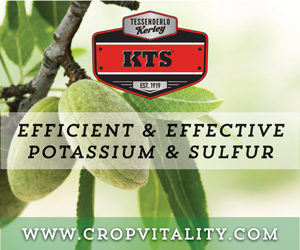

The 2018 Farm Bill describes a plant bio stimulant as a substance or microorganism that, when applied to seeds, plants or the rhizosphere, stimulates natural processes to enhance or benefit nutrient uptake, nutrient efficiency, tolerance to abiotic stress or crop quality and yield.
Grower use of biostimulant products in strawberry production continues to increase, reports Surendra Dara, UCCE farm advisor and strawberry researcher based in San Luis Obispo County.
Used in addition to a standard nutrition program, beneficial microorganisms or substances have been shown to build soil structure, add to microbial diversity and stimulate resistance to pathogens. Use of biostimulant products can also allow for reduction in amount of applied macro nutrients.
The products can be applied to the soil after fumigation to repopulate soil with beneficial microbes as well as at planting time or to treat transplants prior to planting. Dara said when biostimulants are used in strawberry crops, they are typically applied multiple times throughout the season .
Application rates and frequency will vary according to the product formulations and the active ingredients. Biostimulant products can be applied via a drip system or as a foliar spray.
According to Dara, when plants are exposed to pests, pathogens, abiotic stressors, or beneficial microbes, defense genes are activated through two major immune responses, helping plants fight real infection or prepare them for potential infection. Biostimulant products induce plant resistance to stress factors through systemic acquired resistance or induced systemic resistance. Dara compares the beneficial microbes and non-microbial biostimulants to vaccines that prepare plants for potential health challenges.
The 2018 Farm Bill included statutory language and a formal regulatory framework to ensure a review process and uniform national labeling of agricultural bio stimulant products. The bill was also the first federal recognition of biostimulant products as emerging technology for production agriculture.
Biostimulant products are generated with the capture of microorganisms from soil or plant samples. They are grown in lab cultures and tested for their ability to improve the growth of crop seedlings. Much like new varieties of a crop, the most promising microorganisms advance to field trials. If successful, the microorganism can be directed for approval and production.
Dara’s studies in tomato and strawberry demonstrated varying levels of benefits to crop health and yield improvements from a variety of botanical, microbial, or mineral biostimulants and other supplements. Some of the evaluated products resulted in significant yield improvement in both tomatoes and strawberries compared to the grower standard practices. There are several biostimulant products in the market with a variety of active ingredients, and some also have major plant nutrients such as nitrogen, phosphorus, and potassium. Depending on the crop, growing conditions, potential risk of pests and diseases, and other factors, growers can use one or more biostimulant products.
















